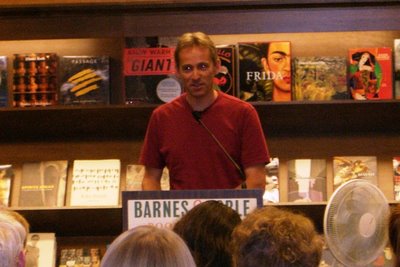 Book: The Lathe of Heaven
Book: The Lathe of HeavenAuthor: Ursula K. Le Guin
Audience: High School and Adult
In a Nutshell: one man's dreams become reality- literally
George Orr is afraid to fall asleep. More specifically, he's afraid to dream. Sometimes, the things he dreams come true. Not just in a make-a-wish-and-magically-get-a-puppy kind of way. If he dreamed he had a dog, he wouldn't just wake up and find one on his doorstep. He would wake up to discover he had gotten a dog 2 years ago, and no one in the world would remember the way things used to be- no one except him. The dog thing doesn't happen in the book, but you get the idea.
George is ordered to go to a psychiatrist who specializes in dreaming, a man named Dr. Haber. Naturally, at first Haber thinks George is delusional. The good doc uses hypnosis and a machine called the Augmentor to help George dream something pleasant and hopefully break his fear of dreaming. But being aware of the content of George's dreams gives Haber the ability to remember both realities when things change. Not just that, but having control of what George dreams gives Haber the power to change the world. Like most people, he thinks he has good intentions, that he is trying to create a better world. But nothing turns out quite the way it should, and the dreams reshape history in twisted, only partly positive ways. As Haber gets closer to finding a way to take George's abilities as his own, George must stop him before so much meddling causes the world to fall apart at the seams. Very intriguing sci-fi classic about the interconnection of dream and reality, mind and matter, and the evil that lurks in the heart of man.
It's set in Portland, Oregon, which lends the story that Pacific Northwest geography I love so much. On an interesting geo-historical side note, the book was written in 1971, 9 years before the eruption of Mt. St. Helens. Le Guin mentions the beautiful peak of St. Helens several times, but it is Mt. Hood that erupts in the book's dream-altered realities.
If you're wondering where the title comes from (I know I was), each chapter begins with a quote, many drawn from Eastern philosophy, especially Taoist thought. Chapter 3 begins with this quote from Chuang Tse:
Those whom heaven helps we call the sons of heaven. They do not learn this by learning. They do not work it by working. They do not reason it by using reason. To let understanding stop at what cannot be understood is a high attainment. Those who cannot do it will be destroyed on the lathe of heaven.
So now you know. If you're wracking your brain to remember what a lathe is, here's some help:
All clear now, right?
It spins chunks of wood and shapes them into things like table legs and baseball bats. More to the point, it was probably the only power tool in existence before 300 B.C., when Chuang Tse, a.k.a. Zhuangzi, a.k.a. Zhuang Tze, etc., was thinking Taoist thoughts. If he were writing today, would he say, "those who cannot do it will be destroyed on the Black & Decker plunge router of heaven"? Who knows.










 I even got an awesome Ginja Assassin postcard w/ signing.
I even got an awesome Ginja Assassin postcard w/ signing.






